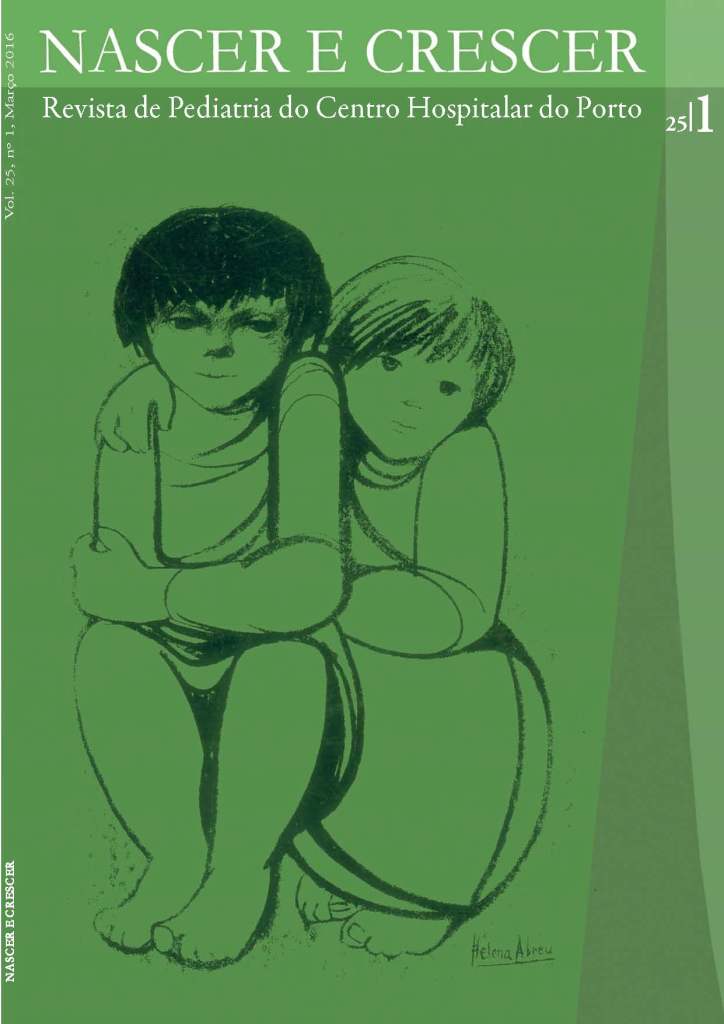Idiopathic toe walking in children and adolescents
DOI:
https://doi.org/10.25753/BirthGrowthMJ.v25.i1.8826Keywords:
Achilles tendon, equinus deformity, gait disorders, pediatric ageAbstract
Toe walking has an estimated incidence of 7-24% in the general pediatric population and is a frequent cause of referral to outpatient pediatric neurology. Idiopathic toe walking occurs in healthy children without spasticity and normal osteotendinous reflexes, is evident from the beginning of independent gait and always bilateral and not progressive. The etiology is unknown, so it is a diagnosis of exclusion. Thus, in evaluating these children is essential to be alert to sensory or motor signs because this gait pattern may be the first sign of pathologies such as cerebral palsy, congenital muscular dystrophy or autism spectrum disorder. Therapeutic options include more conservative treatments such as physiotherapy, use of orthopedic footwear, splints or orthotics; or more invasive treatments such as use of serial casts, botulinum toxin or surgery.
The aim of this article is: to address epidemiological and pathophysiological aspects, review the clinical presentation and differential diagnosis and propose guidelines for the monitoring and treatment of idiopathic toe walking in pediatric age.
Downloads
References
Engelbert R, Gorter WJ, Uiterwaal C, Putte E, Helders P. Idiopathic toe-walking in children, adolescentes and young adults: a matter of local or generalised stiffness? BMC Músculoskeletal Disorders. 2011; 12: 61.
Williams C, Michalitsis J, Murphy A, Rawicki B, Haines T. Do external stimuli impact the gait of children with idiopathic toe walking? A study protocol for a within-subject randomised control trial. BMJ Open. 2013; 3: 0002389.
Zimbler S. Idiopathic Toe Walking: Current Evaluation and Management. Children´s Harvard Hospital. 2007; 98-100.
Williams C, Tinley P, Curtin M, Nielsen S. Hand preference in children with an idiopathic toe walking gait. Acta Pædiatrica. 2012; 101: 140–1.
Fox A, Deakin S, Pettigrew G, Paton R. Serial casting in the treatment of idiopathic toe-walkers and review of the literature. Acta Orthop Belg. 2006; 72: 722-30.
Le Cras S, Bouck J, Brausch S, Taylor-Haas A; Cincinnati Children’s Hospital Medical Center: Evidence-based clinical care guideline for Management of Idiopathic Toe Walking, http://www.cincinnatichildrens.org/svc/alpha/h/health-policy/otpt.htm, Guideline 040, pages 1-17, February 15, 2011.
Engström P, Tedroff K. The Prevalence and Course of Idiopathic Toe-Walking in 5-Year-Old Children. Pediatrics. 2012; 130: 279-84.
Mark C Clark. Approach to the child with a limp. Uptodate 2013. Última atualização a 14 de Setembro de 2012.
Engström P. idiopathic toe-walking in children: prevalence, neuropsychiatric symptoms and the effect of botulinum toxin a treatment. the department of children’s and health Karolinska Institutet, Stockholm, Sweden. Thesis for doctoral degree. 2012: 1-59.
Caselli M. Habitual toe walking. Podiatry management. 2002: 163-78.
Eiff M, Steiner E, Judkins D. What is the appropriate evaluation and treatment of children who are “toe walkers”? Clinical Inquiries From the Family Physicians Inquiries Network. 2006; 55: 447.
Hirsch G, Wagner B. The natural history of idiopathic toe-walking: a long-term follow-up of fourteen conservatively treated children. Acta Pædiatrica. 2004; 93: 196–9.
Engström P, Gutierrez-Farewik E, Bartonek A, Tedroff K, et al. Does botulinum toxin A improve the walking pattern in children with idiopathic toe-walking? J Child Orthop. 2010; 4:301–8.
Klooker TK, Schuerman FA. Idiopathic toe-walking. Pediatric Clinics Amsterdam. 2006; 17: 1-2.
Williams C, Tinley P, Curtin M. The Toe Walking Tool: A novel method for assessing idiopathic toe walking children. Gait & Posture. 2010; 32: 508–11.
Duey-Holtz A (approved by). Idiopathic Toe Walking Clinic Guidelines – Orthopaedic Practice. Children´s Hospital of Wisconsin Children´s Speciality Goup. 2012.
Dietz F, Khunsree S. idiopathic toe walking: to treat or not to treat, that is the question. The Iowa Orthopaedic Journal. 2012; 32: 184-8.
Downloads
Published
How to Cite
Issue
Section
License
Copyright and Authors' Rights
All articles published in Nascer e Crescer - Birth and Growth Medical Journal are Open Access and comply with the requirements of funding agencies or academic institutions. For use by third parties, Nascer e Crescer - Birth and Growth Medical Journal adheres to the terms of the Creative Commons License "Attribution - Non-Commercial Use (CC-BY-NC)".
It is the author's responsibility to obtain permission to reproduce figures, tables, etc. from other publications.
Authors must submit a Conflict of Interest statement and an Authorship Form with the submission of the article. An e-mail will be sent to the corresponding author confirming receipt of the manuscript.
Authors are permitted to make their articles available in repositories at their home institutions, provided that they always indicate where the articles were published and adhere to the terms of the Creative Commons license.


